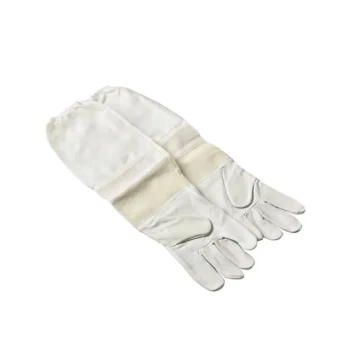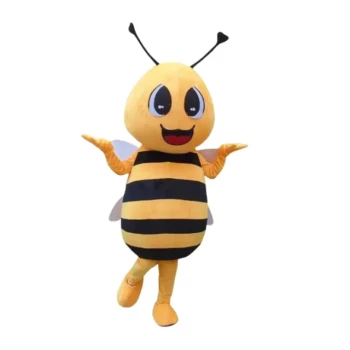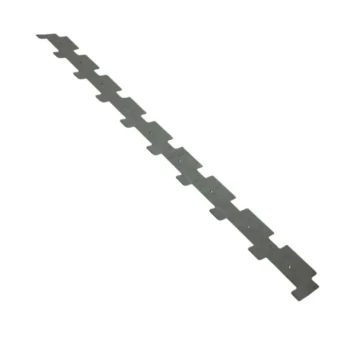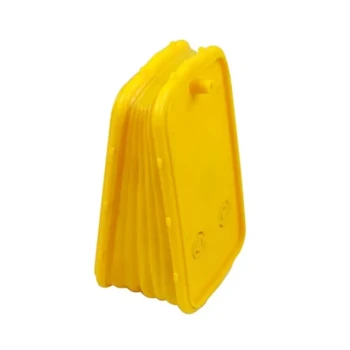In short, the key features of beekeeping gloves are a precise balance between sting-proof thickness, the dexterity needed to handle delicate frames, a snug fit that prevents bees from entering, and extended coverage to protect your forearms. Finding the right glove means understanding how these features interact.
The central decision in choosing beekeeping gloves is navigating the trade-off between maximum protection and maximum dexterity. The ideal glove is not a single product, but the one that best matches your personal comfort with risk and the specific tasks you need to perform.
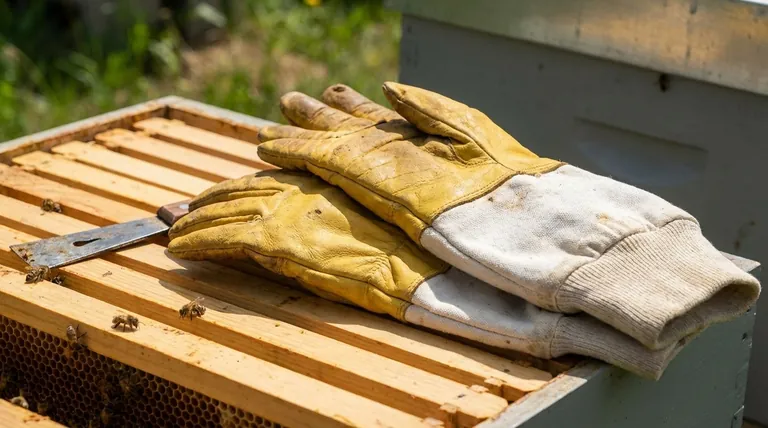
The Core Principles of Glove Selection
To choose the right gloves, you must evaluate them against four fundamental requirements. Each feature directly impacts your safety, confidence, and effectiveness while working with your bees.
Sting Protection
The primary function of a beekeeping glove is to prevent stings. The material must be thick enough to stop a bee's stinger from penetrating and reaching your skin.
This is why beekeeping gloves are typically made from durable materials like leather.
Dexterity and Handling
While protection is critical, you cannot work effectively if you can't feel what you're doing. You need enough dexterity to gently handle hive tools, lift frames without crushing bees, and perform delicate inspections.
Overly thick gloves can lead to clumsy movements, which can agitate the colony and ironically increase the risk of stings.
Fit and Comfort
A proper fit is a crucial safety feature. Gloves should be snug but not tight, with no excess material at the fingertips.
Loose-fitting gloves can accidentally crush bees, releasing alarm pheromones that provoke the hive. A snug fit also prevents bees from crawling inside the glove at the wrist.
Forearm Coverage
Stings are not limited to the hands. Quality beekeeping gloves extend up the forearm, often to the elbow, to provide comprehensive protection.
They should feature an elastic cuff that creates a secure seal, which is often worn underneath the sleeve of your bee suit or jacket for complete coverage.
Analyzing the Common Materials
The material of your glove is the single biggest factor determining its balance of protection and dexterity. Each type serves a different purpose.
Cowhide Leather (Maximum Protection)
Cowhide is the thickest and most protective material commonly used for beekeeping gloves. It offers the highest level of confidence against stings.
However, its thickness significantly reduces dexterity, making delicate tasks more difficult. This is often a preferred choice for beginners or when working with a particularly defensive colony.
Goatskin Leather (The Balanced Choice)
Goatskin is thinner and more supple than cowhide, offering a superior balance of protection and dexterity.
It is still highly effective at blocking stingers but allows for much better feel and control when handling frames and tools. For this reason, goatskin is the most popular choice for a wide range of beekeepers.
Nitrile Gloves (Maximum Dexterity)
Disposable nitrile gloves offer no guaranteed sting prevention. The material is not thick enough to stop a determined bee.
However, they may reduce the chances of a stinger embedding and, most importantly, provide the same dexterity as working barehanded. They also keep your hands clean from honey and propolis, making them a choice for experienced beekeepers performing very specific, delicate tasks.
Understanding the Trade-offs
Choosing a glove is not about finding a single "best" option, but about making an informed decision based on your priorities.
The Protection vs. Dexterity Spectrum
The choice of material places you on a spectrum. Cowhide sits at one end, prioritizing protection above all else. Nitrile sits at the opposite end, sacrificing protection for total control.
Goatskin represents the effective middle ground where most beekeepers find the right compromise for day-to-day work.
The Risk of a Poor Fit
Never underestimate the importance of fit. A glove that is too loose is a liability. It reduces your dexterity, increases the likelihood of crushing bees, and creates gaps for bees to enter.
Always ensure your gloves fit snugly around your hands and fingers before entering a hive.
Making the Right Choice for Your Goal
Select your gloves based on your experience level and the temperament of your bees.
- If your primary focus is maximum safety and confidence: Choose thick cowhide or goatskin leather gloves that offer the best sting prevention.
- If your primary focus is a balance of safety and dexterity for general use: Select well-fitting goatskin gloves, which provide reliable protection without sacrificing too much feel.
- If your primary focus is delicate tasks and maximum feel: Consider using nitrile gloves, but only if you are an experienced beekeeper who fully understands and accepts the increased risk of being stung.
Ultimately, the right gloves are the ones that allow you to work calmly and confidently inside your hive.
Summary Table:
| Feature | Why It Matters | Key Considerations |
|---|---|---|
| Sting Protection | Prevents bee stings from penetrating the skin. | Material thickness (e.g., cowhide for max protection). |
| Dexterity & Handling | Allows for delicate frame handling and tool use. | Material flexibility (e.g., goatskin for a good balance). |
| Fit & Comfort | A snug fit prevents bees from entering and avoids crushing them. | Snug but not tight; no excess material at fingertips. |
| Forearm Coverage | Protects arms from stings; creates a secure seal. | Should extend to the elbow with an elastic cuff. |
Ready to equip your apiary with the right protective gear?
At HONESTBEE, we supply commercial apiaries and beekeeping equipment distributors with high-quality, durable gloves designed for professional use. Whether you need the maximum protection of cowhide or the superior balance of goatskin, we have the wholesale solutions to keep your operations safe and efficient.
Contact our team today to discuss your bulk glove requirements and get a quote tailored to your business.
Visual Guide

Related Products
- Goat Skin Leather Bee Sting Proof Beekeeping Gloves with Canvas Sleeve
- Goatskin Leather Beekeeper Gloves with Vent Long Sleeve for Beekeeping Honey Bee Sting Proof Protection
- Mesh Ventilated 3 Layer Goatskin Beekeepers Gloves for Beekeeping
- Professional Galvanized Hive Strap with Secure Locking Buckle for Beekeeping
- Professional Replacement Bee Smoker Bellows for Beekeeping Equipment
People Also Ask
- What should beginner beekeepers consider when choosing beekeeping gloves? Balance Protection and Dexterity for Success
- What are some expert tips for cleaning beekeeping gloves? Extend Glove Life & Protect Hive Health
- What are the pros and cons of leather beekeeping gloves? Maximize Protection or Dexterity
- What types of gloves are most effective at preventing bee stings? Durable Goatskin & Nitrile Barriers
- What are the steps to clean goat leather beekeeping gloves? A Guide to Extend Gear Life

